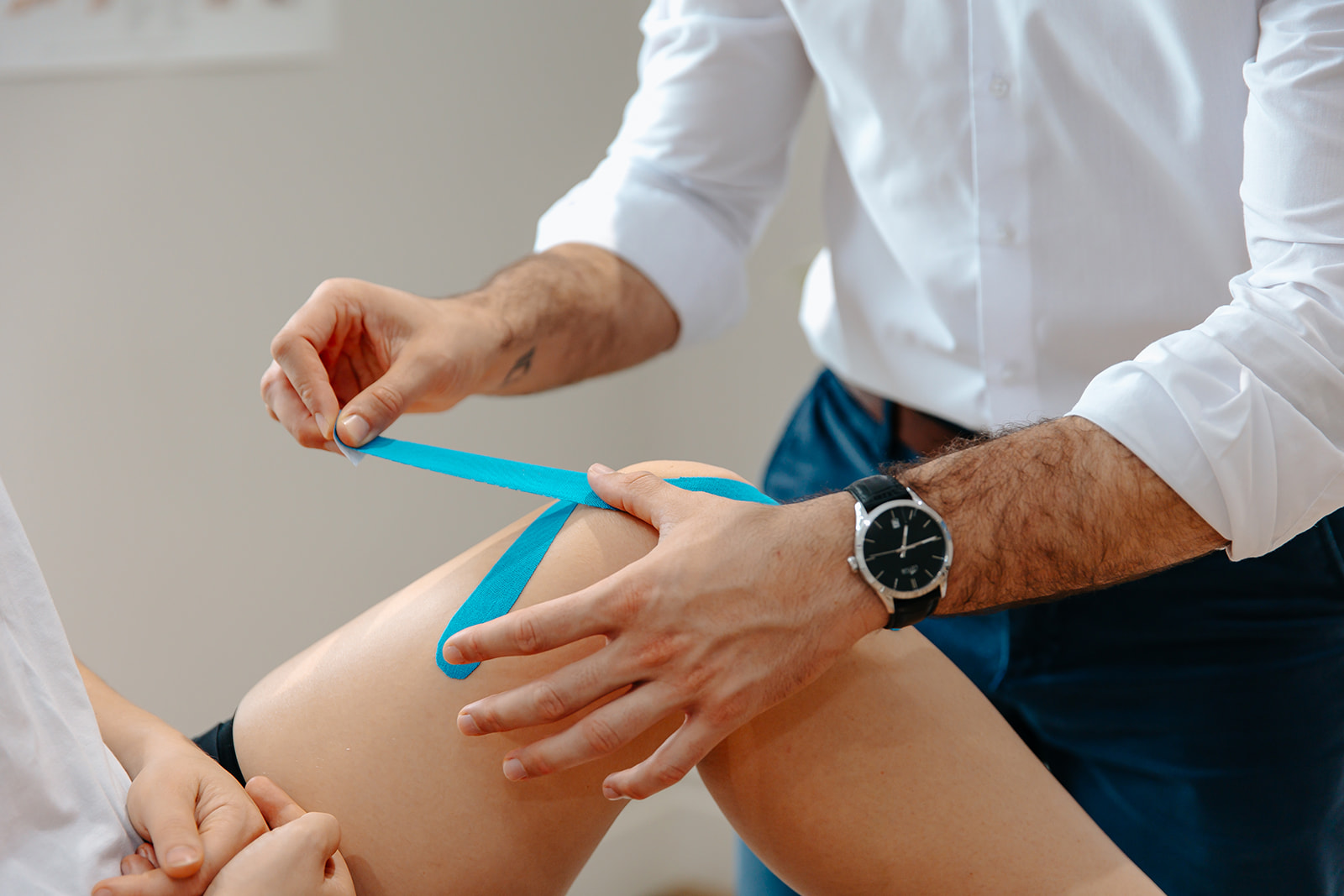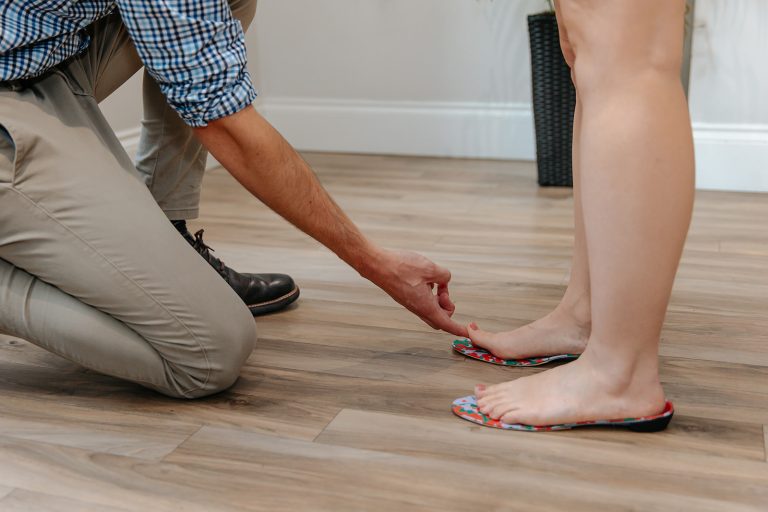Hatt Clinic
April 07, 2017
July 25, 2024

Updated August, 25, 2025
Knee pain is common among runners. This is because running is a high-impact activity that puts increased stress on your knees.
In some cases, the pain is a sign of fatigue or overuse. But if you frequently have knee pain after running, it could be a sign you need to take action.
In this post, we’ll look at runner’s knee and other causes of knee pain in runners. And we’ll give advice on how to prevent knee pain when running.
Runner’s Knee is one of the most common causes of knee pain in runners. And it can affect anyone. From beginners, whose muscles aren’t used to running, to experienced runners, who are pushing themselves hard.
Runner’s knee — also known as patellofemoral pain syndrome — describes an irritation of the surface behind the knee cap (patella).
If you have runner’s knee, you may experience:
The pain can be dull, or sharp and stabbing. It may feel like your knee is grinding or cracking when you move it.
The most common contributing factor to runner’s knee is training error, also known as overuse. Training errors include pushing yourself too hard and running excessive distances.
If you think you have runner’s knee, the first thing to do is stop running.
If the pain is severe or your knee is swollen, you should see a physiotherapist straight away. Otherwise, you can start your treatment at home.
You can treat your knee using the RICE method (Rest, Ice, Compression, Elevation). And take over-the-counter anti-inflammatories, like ibuprofen, to reduce the pain and inflammation. But these are only short term measures.
If the pain hasn’t cleared up after a week, you should see a physiotherapist.
To treat runner’s knee in the longer term, you may need knee physiotherapy.
The good news is, with an appropriate treatment plan, runner’s knee should settle down over time.
With proper rest and care, most people will recover from runner’s knee in around 4-6 weeks.
Stretching and strengthening exercises with physiotherapy will help your recovery.
While runner’s knee is the most common cause of knee pain, there are also injuries that can contribute to pain in the knee.
The iliotibial (IT) band is a thick band of tissue that runs from the hip down to the knee and helps to stabilise the knee joint.
ITBS occurs when this band and the surrounding tissues become irritated, leading to pain on the side of the knee. This irritation could be caused by training error, poor running form or muscle weakness.
Like runner’s knee, ITBS can be treated in the short term with rest and anti-inflammatories. But you can also do strengthening and stretching exercises to improve the strength, flexibility and capacity of your knees.
Kneecap bursitis — also known as prepatellar bursitis — affects the front of the kneecap.
The bursa is a small, fluid-filled sac. It acts as a cushion between your bones and soft tissues to reduce friction and allow smooth movement of your joints.
When the bursa becomes inflamed, it can cause pain and swelling in the knee. This may be caused by repetitive pressure on the knee, or by movement, such as kneeling or running.
To treat kneecap bursitis, you can use the RICE method and take anti-inflammatories. In some cases, a doctor may recommend draining the fluid from the bursa to relieve symptoms.
Patellar tendinopathy — sometimes called jumper’s knee — is another common knee injury that can affect runners and athletes.
This condition occurs when the patellar tendon becomes inflamed and irritated.
It causes pain and tenderness in the front of the knee. The pain can be sharp and debilitating, making it difficult to continue with your regular running routine. You may also experience stiffness in your knee, especially in the morning.
The RICE method can help to ease the pain of patellar tendinopathy. Strengthening exercises are vital to restore the capacity of the tendon. Addressing your running form and shockwave therapy can also help.
The meniscus is a wedge-shaped structure made of cartilage within your knee. It acts as a shock absorber, distributing weight and pressure evenly across the knee joint to prevent damage to the bones.
Damage often occurs due to acute injury, such as a twist when the foot is planted on the ground, or it can happen slowly over time.
Treatment may include rest, rehabilitation-led physical therapy and, in some cases, surgery to repair or remove portions of the meniscus.
Osteoarthritis can cause swelling, stiffness, and knee pain when flexing and extending the knee joint. These conditions can make simple tasks like walking, climbing stairs, or even sitting down, painful and challenging.
Treatment may include medications, lifestyle changes, or physical therapy to improve the strength, flexibility, and mobility of the knee.
There are a number of ways to eliminate or reduce the risk of developing knee pain while running.
Poor running form can cause knee pain and other problems.
A gait analysis for running is designed to help you improve your running technique and performance.
The analysis will give you a personalised assessment, with advice on the best footwear. At Hatt Clinic, we’ll also work with you to correct issues with your gait and help you avoid injury and knee pain.
Having appropriate running shoes can help reduce the risk of discomfort — not just in your knees, but in your other joints as well.
Shoes that are worn out or don’t provide enough support can increase stress on your knees and other areas of the body, leading to pain and potential injuries.
When choosing a running shoe, you should consider the:
Over time, running shoes lose their cushioning and support, which is why it’s often recommended to replace them every 300–500 miles.
*Our podiatrist-recommended running shoe brands are: Asics, Brooks, New Balance, Vionic, Adidas and Nike.
It’s easy to push yourself too hard when you have goals in mind, but doing too much, too soon is a leading cause of running-related injuries, including knee pain.
To avoid issues, it’s best to increase your mileage and intensity gradually when running. Try to repeat a run at least 3 or 4 times before you increase the distance.
The quadriceps, hamstrings, glutes, calf, and hip muscles all play a key role in supporting the knees. One way to prevent knee pain while running is by incorporating that focus on these particular muscles.
Exercises such as squats, lunges, and leg presses are great for building muscle strength in and around your knee joints. Strengthening your leg muscles can provide better support and help to minimise the risk of knee pain and injury.
Improper running technique can lead to knee pain and injury.
When you run, make sure to maintain good posture, softly landing the midfoot of each foot as you stride.
Avoid over-striding, as this adds to the impact and puts extra stress on your knees.
A proper warm-up prepares your body for a run, and kickstarts your recovery. Take the time for some light stretches to loosen up your muscles before you run, and make sure to cool down afterwards to help prevent stiffness.
A simple warm-up could include 5–10 minutes of light jogging or walking.
A cool-down could involve 5–10 minutes of light stretching or walking to allow your body to recover.
Just like strength, flexibility helps to prevent knee pain and improve your overall running performance.
Tight muscles can be as susceptible to injury as weak ones, so including exercises like yoga or pilates can help to enhance joint mobility and reduce tightness.
If something doesn’t feel right while running, it’s important that you listen to your body.
If you experience any pain or discomfort, don’t ignore it. Continuing to push through the pain can lead to further injury and long-term damage.
Instead, seek help from a professional who can help guide you on how to get back to running again, pain-free.
Hatt Clinic has a range of services to improve your movement and reduce pain and injury. The best place to start is with an initial assessment. There are two different assessments to choose from, depending on your issue.
Whether you’re new to running or a regular runner who experiences knee pain often, a gait analysis for running can help. The analysis will assess your running technique and identify areas where you can improve your performance and technique.
To book a gait analysis for running, go to our online booking form and select initial gait analysis from the menu.
If you need a long-term solution for your knee pain, knee physiotherapy could help.
To book an appointment, go to our online booking form and select initial physiotherapy from the menu.
Alternatively, you can email us at: enquiries@hattclinic.co.uk
Or call the clinic:
Devizes: 01380 730473
Frome: 01672 516580
Marlborough: 01373 452604
Hatt Clinic
April 07, 2017

Hatt Clinic
April 07, 2017
Hatt Clinic
October 27, 2024